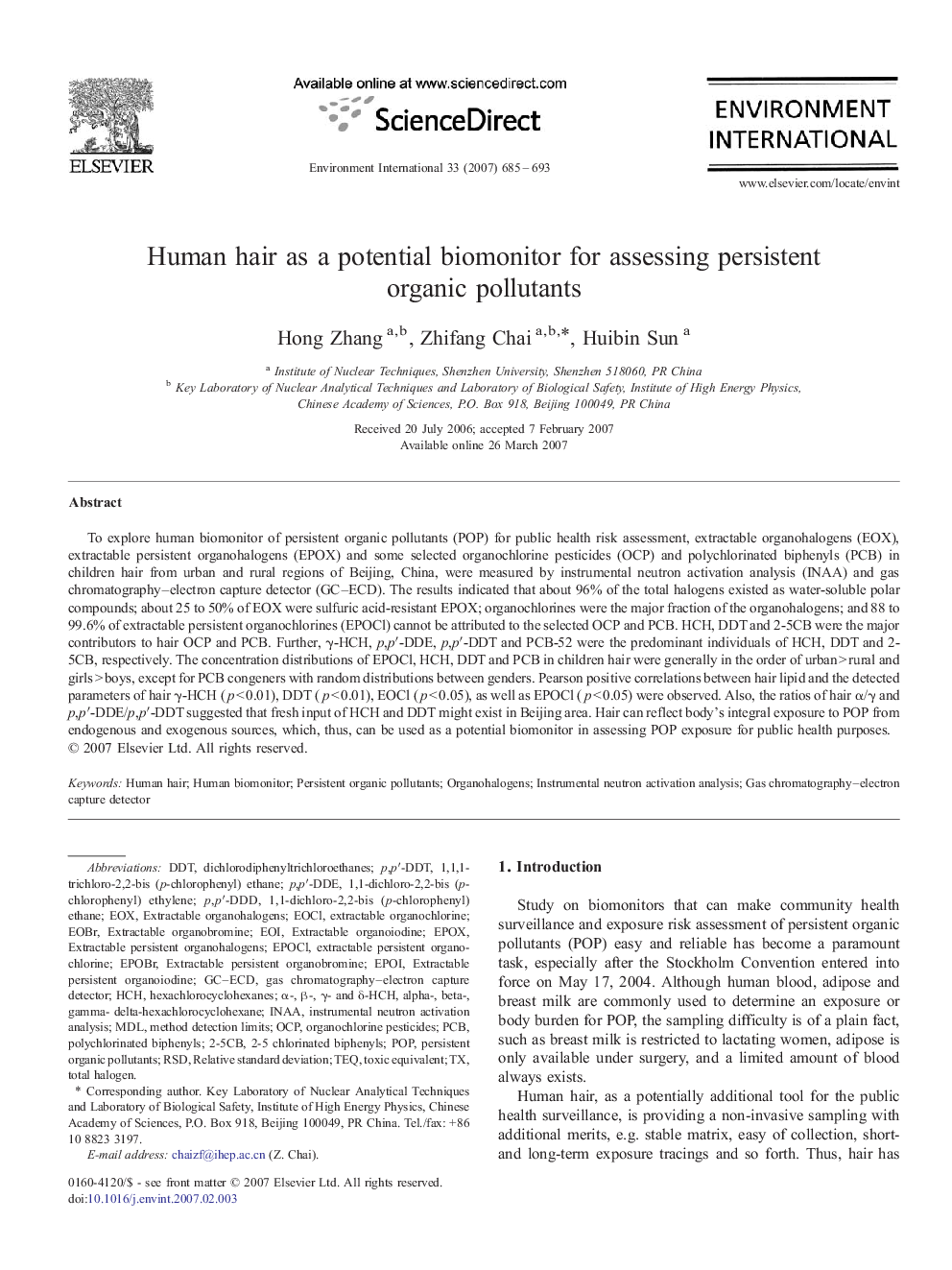| کد مقاله | کد نشریه | سال انتشار | مقاله انگلیسی | نسخه تمام متن |
|---|---|---|---|---|
| 4423910 | 1308851 | 2007 | 9 صفحه PDF | دانلود رایگان |

To explore human biomonitor of persistent organic pollutants (POP) for public health risk assessment, extractable organohalogens (EOX), extractable persistent organohalogens (EPOX) and some selected organochlorine pesticides (OCP) and polychlorinated biphenyls (PCB) in children hair from urban and rural regions of Beijing, China, were measured by instrumental neutron activation analysis (INAA) and gas chromatography–electron capture detector (GC–ECD). The results indicated that about 96% of the total halogens existed as water-soluble polar compounds; about 25 to 50% of EOX were sulfuric acid-resistant EPOX; organochlorines were the major fraction of the organohalogens; and 88 to 99.6% of extractable persistent organochlorines (EPOCl) cannot be attributed to the selected OCP and PCB. HCH, DDT and 2-5CB were the major contributors to hair OCP and PCB. Further, γ-HCH, p,p′-DDE, p,p′-DDT and PCB-52 were the predominant individuals of HCH, DDT and 2-5CB, respectively. The concentration distributions of EPOCl, HCH, DDT and PCB in children hair were generally in the order of urban > rural and girls > boys, except for PCB congeners with random distributions between genders. Pearson positive correlations between hair lipid and the detected parameters of hair γ-HCH (p < 0.01), DDT (p < 0.01), EOCl (p < 0.05), as well as EPOCl (p < 0.05) were observed. Also, the ratios of hair α/γ and p,p′-DDE/p,p′-DDT suggested that fresh input of HCH and DDT might exist in Beijing area. Hair can reflect body's integral exposure to POP from endogenous and exogenous sources, which, thus, can be used as a potential biomonitor in assessing POP exposure for public health purposes.
Journal: Environment International - Volume 33, Issue 5, July 2007, Pages 685–693